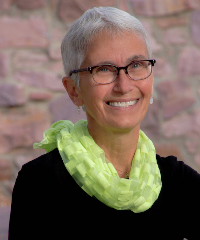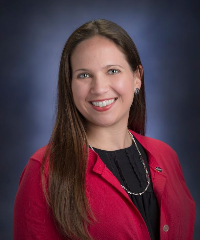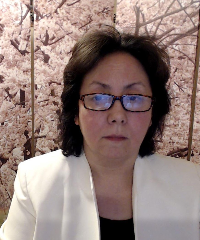Community Blogs
Community Blogs
Discover how the GLOBE community is engaging in all things GLOBE through the community blog posts below.
Learn how to create a GLOBE community blog post.
Filter By:
Blogs List
The Problem
You've got a list of AOI coordinates. Google Maps will show them to
you, but it won't tell you the best order to visit them. If you’ve got
more than a few points, this becomes a mess—guesswork, wasted time,
and unnecessary backtracking.
We need a tool that will plan the most efficient route for us instead
of figuring things out ourselves. That’s what this does, here’s how:
The Solution
This problem is a textbook example of the classic Traveling
Salesman Problem (TSP): How can we find the shortest route
that visits each location (in our ...
Read More »
Posted in:
Curriculum:
TECHNOLOGY
STEM
GLOBE Science Topics:
EARTH AS A SYSTEM
Investigation Areas:
EARTH AS A SYSTEM
Our project for SEES 2024 was "Creating a Model to Identify
High-Risk Areas for Flash Flooding in Houston, Texas." In this
blog, I will discuss how we calculated which areas are "high-risk."
There are many ways to identify the most at-risk points of flooding
in a given region. Such points are commonly identified in a flood map,
such as the one here:
For our project, we decided to look at elevation data, which is
perhaps the most intuitive: water flows downhill and will accumulate
in the lowest regions. To get our elevation data, we used ...
Posted in:
GLOBE Science Topics:
CLIMATE CHANGE
EARTH AS A SYSTEM
EARTH SYSTEM SCIENCE
Investigation Areas:
EARTH AS A SYSTEM
BIOSPHERE
LAND COVER CLASSIFICATION
Primary Audience:
SCIENTISTS
STUDENTS
TEACHERS
Student Research Reports:
MISSION MOSQUITO REPORT
SEES 2024 Experience
Getting the opportunity to participate in the NASA SEES Earth System
Explorers program has positively impacted my educational and career
journey in more ways than I could've imagined. Throughout this
internship, I gained an immense amount of knowledge in Earth science,
utilizing the GLOBE Observer app, ArcGIS, Collect Earth Online,
Python, and many other tools to better understand the environment
around us. During the last few weeks of the program, a team of seven
other interns and I completed our own research project called
"Harnessing ...
Posted in:
GLOBE Science Topics:
EARTH AS A SYSTEM
Investigation Areas:
EARTH AS A SYSTEM
LAND COVER CLASSIFICATION
MOSQUITOES
Primary Audience:
SCIENTISTS
STUDENTS
TEACHERS
Student Research Reports:
MISSION MOSQUITO REPORT
In this blog post, I will go through every step of the internship and
outline my experience!
Before I do that, first of all, I would like to say that I am so
happy that I got to spend my summer with SEES! This program was so
amazing and helped guide me a bit more on what I want to do in my
future career and in college! I am very grateful for all of our
mentors who guided us through the program and provided great knowledge
and support to all of us! Thank you for this opportunity.
Modules: Climate Science Background and Exploring the Earth
To prepare for the ...
Posted in:
GLOBE Science Topics:
EARTH AS A SYSTEM
Investigation Areas:
EARTH AS A SYSTEM
LAND COVER CLASSIFICATION
MOSQUITOES
Student Research Reports:
MISSION MOSQUITO REPORT
If you had asked me what “citizen science” was before this internship
with the NASA SEES ( STEM Enhancement in Earth Science ) Earth System
Explorers, I most likely would have conjured a description that
involved studying the human body. Now, however, I feel confident in
saying that citizen science is a dynamic, extraordinary meaningful
process by which everyday citizens contribute to real-world scientific
research. This internship allowed me to take on the roles of both a
citizen scientist and a researcher, deeply engaging with my local
community and environment while ...
Posted in:
GLOBE Science Topics:
DATA INCLUDED
EARTH AS A SYSTEM
Investigation Areas:
EARTH AS A SYSTEM
Primary Audience:
PARTNERS
SCIENTISTS
STUDENTS
TEACHERS
Student Research Reports:
MISSION MOSQUITO REPORT
The wildfire data analysis journey began with a dataset comprising
over 1200 points located in the California region. To uncover the
correlation between land cover types and wildfire risk, we first
needed to determine the wildfire risk for each point using the FEMA
Wildfire Risk Map. This step involved entering coordinates into the
software to obtain the wildfire risk index for each location. From
this dataset, we categorized approximately 325 points as having a very
low risk, 350 as moderate risk, and 578 as very high risk for
wildfires. These categories served as the ...
Posted in:
GLOBE Science Topics:
EARTH AS A SYSTEM
Investigation Areas:
EARTH AS A SYSTEM
LAND COVER CLASSIFICATION
Primary Audience:
SCIENTISTS
STUDENTS
TEACHERS
Student Research Reports:
MISSION MOSQUITO REPORT
My group’s project focused on using land cover data and GLOBE
Observer images to create a machine learning model that can predict
land surface temperature - a measure of how hot the surface of the
Earth feels in a given location. For context, GLOBE is short for
“Global Learning and Observations to Benefit the Environment”. It’s an
app that lets volunteers across the world take observations of their
local community (these could be of cloud cover, land cover, or
mosquito habitats) and these observations help scientists track
changes in the environment. It’s part of a wider ...
Posted in:
GLOBE Science Topics:
EARTH AS A SYSTEM
Investigation Areas:
HYDROSPHERE
EARTH AS A SYSTEM
MOSQUITOES
Learning Activities:
EARTH AS A SYSTEM
LAND COVER/BIOLOGY
Primary Audience:
PARTNERS
STUDENTS
TEACHERS
Student Research Reports:
MISSION MOSQUITO REPORT
Posted in:
Curriculum:
SCIENCE AND MATH
TECHNOLOGY
STEM
Field Campaigns:
SEASONS AND BIOMES
CARBON CYCLE
SURFACE TEMPERATURE
GLOBE Mission Earth News:
GENERAL ACTIVITIES
GLOBE Science Topics:
BACKYARD SCIENCE
CLIMATE CHANGE
GLOBE PROTOCOLS
EARTH AS A SYSTEM
EARTH SYSTEM SCIENCE
SCIENTIST SKILLS
Learning Activities:
LAND COVER/BIOLOGY
The GLOBE Clouds team is delighted to announce this new section that showcases sky and cloud photographs from around the world! We’ve also been receiving some amazing questions from students.
The featured question was asked by students from Corpus Christi Catholic School :
Question: Why can we see clouds but not evaporation?
Answer: Water vapor is invisible. However, the water in clouds is in liquid or solid state, not gas.
Do you have a favorite cloud photo or a question for the team? Use the linked form to cast your vote and ask us any question ...
Posted in:
Curriculum:
STEM
GLOBE Science Topics:
BACKYARD SCIENCE
CLIMATE
CLIMATE CHANGE
GENERAL SCIENCE
GENERAL SCIENCE @ES
EARTH AS A SYSTEM
EARTH SYSTEM SCIENCE
Investigation Areas:
ATMOSPHERE
EARTH AS A SYSTEM
News Topics:
NEWS BRIEFS
Primary Audience:
ALUMNI
COUNTRY COORDINATORS
PARTNERS
SCIENTISTS
STUDENTS
TEACHERS
TRAINERS
Brad Hegyi is a research scientist for the NASA Prediction of Worldwide Energy Resources (POWER) project team at Langley Research Center in Hampton, Virginia, USA. Brad develops metrics and statistics for POWER from model estimates of future climate to help support planning for future energy use by heating and cooling systems in buildings. Brad also helps create interactive data products to better visualize changes occurring in the climate data.
The energy that comes from the Sun is the basic source of energy for everything on Earth. Solar energy drives Earth’s weather and ...
Posted in:
Curriculum:
TECHNOLOGY
STEM
GLOBE Science Topics:
BACKYARD SCIENCE
CLIMATE
CLIMATE CHANGE
DATA INCLUDED
GENERAL SCIENCE
EARTH AS A SYSTEM
EARTH SYSTEM SCIENCE
SCIENTIST SKILLS
Investigation Areas:
ATMOSPHERE
EARTH AS A SYSTEM
Primary Audience:
ALUMNI
COUNTRY COORDINATORS
PARTNERS
SCIENTISTS
STUDENTS
TEACHERS
TRAINERS
The Sun drives many processes in Earth’s atmosphere. As the Sun rises and sets, it warms the Earth’s surface at different intensities. These changes in heat lead to changes in the clouds, especially the types of clouds. To study these changes, we need observations at different times over the course of hours, days, weeks, months, and years from around the globe. It can be tricky to capture the extent of these interactions with satellites alone, which is why we need observations from your perspective on the ground as part of the GLOBE Eclipse Challenge: Clouds and Our ...
Posted in:
Curriculum:
STEM
GLOBE Science Topics:
BACKYARD SCIENCE
CLIMATE
CLIMATE CHANGE
DATA INCLUDED
GENERAL SCIENCE
GLOBE PROTOCOLS
EARTH AS A SYSTEM
Investigation Areas:
ATMOSPHERE
EARTH AS A SYSTEM
Energy from the Sun warms our planet, and changes in sunlight can also cause changes in temperature, clouds, and wind. Clouds are ever changing and give you clues and information on what is happening in the atmosphere. Eclipses provide a natural experiment, in which the Sun’s light is blocked from Earth for a brief period in time, allowing us to observe the effects of that sudden change. Read the newly released blog post explaining in depth cloud formation and which ones would be impacted by the upcoming total solar eclipse over North America and how the data will be used. ...
Posted in:
Curriculum:
STEM
GLOBE Science Topics:
BACKYARD SCIENCE
CLIMATE
CLIMATE CHANGE
GLOBE PROTOCOLS
EARTH AS A SYSTEM
Investigation Areas:
ATMOSPHERE
CLOUDS
EARTH AS A SYSTEM
Primary Audience:
ALUMNI
COUNTRY COORDINATORS
PARTNERS
SCIENTISTS
STUDENTS
TEACHERS
TRAINERS
My mosquito trap was definitely a rollercoaster, and with this being the last required update, I still plan on seeing how the traps do after the internship finishes since this has been really interesting. To give some background, I set out three traps around 30-40 yards away from each other around my AOI so I could get an idea of how different areas may yield different results. The first trap was in my backyard, the second trap was in a park close to my house, and the third was by a sidewalk (the pictures I use are from the third trap). The only trap I really had to refill with water was ...
Posted in:
GLOBE Science Topics:
EARTH AS A SYSTEM
Investigation Areas:
LAND COVER CLASSIFICATION
MOSQUITOES
Primary Audience:
STUDENTS
TEACHERS
TRAINERS
Student Research Reports:
INTERNATIONAL VIRTUAL SCIENCE SYMPOSIUM REPORT
MISSION MOSQUITO REPORT
My fieldwork to map land via the Globe app led me to understand where I live better. Texas is the second-largest U.S. state by both area and population. There are only four deserts in North America, and Texas is home to the Chihuahuan Desert. Texas Land Conservancy [TLC] works to conserve natural areas, protect the physical and ecological integrity of their wildlife habitat and native plant communities, and provide essential endangered species habitat. Texas boasts nearly 300 native tree species and is also home to 85 species of mosquitoes. My areas of interest (AOIs) spanned Williamson ...
Posted in:
GLOBE Science Topics:
EARTH AS A SYSTEM
EARTH SYSTEM SCIENCE
Investigation Areas:
MOSQUITOES
Student Research Reports:
INTERNATIONAL VIRTUAL SCIENCE SYMPOSIUM REPORT
MISSION MOSQUITO REPORT
US GLOBE Partners Presented at the UN Institute for Training and Research (UNITAR) on April 26, 2023
"AI and Diplomacy" Panel Discussion moderated by Larisa Schelkin, US GLOBE Partner from Boston, Massachusetts & UNITAR Teaching Faculty with the panelists from the GLOBE Holli Kohl, Project Lead for GLOBE Observer and NASA Goddard Space Flight Center/SSAI and Peder V. Nelson, Oregon State University CEOAS; GLOBE Partnership Coordinator; The GLOBE program is recognized as one of the world's leaders in environmental science diplomacy through education. Congratulations to the GLOBE community!
Posted in:
Curriculum:
SCIENCE AND MATH
TECHNOLOGY
STEM
GLOBE International STEM Network (GISN):
GLOBE INTERNATIONAL STEM NETWORK (GISN)
GLOBE Science Topics:
GLOBE PROTOCOLS
EARTH AS A SYSTEM
SCIENTIST SKILLS
MEETINGS/CONFERENCES
GLOBE Working Groups:
EVALUATION WORKING GROUP
SCIENCE WORKING GROUP
EDUCATION WORKING GROUP
TECHNOLOGY WORKING GROUP
Learning Activities:
ATMOSPHERE AND CLIMATE
EARTH AS A SYSTEM
LAND COVER/BIOLOGY
News Topics:
MEETINGS
REGIONS
NEWS BRIEFS
Primary Audience:
ALUMNI
COUNTRY COORDINATORS
PARTNERS
SCIENTISTS
STUDENTS
TEACHERS
TRAINERS
Teacher's Guide:
LANGUAGES
When you start writing your GLOBE report for IVSS , it might be difficult because you might not sure where to start. We tend to start writing the Methods section first because it is something you did it yourselves, and it should be relatively easy and straightforward to write. Second, you should write the Results section, do graphs, tables and texts (think of a best way to present your cool data to the whole world). Third, you should start writing the Introduction stating your hypotheses and predictions. The next step would be the Discussion section. It is funny to say but as ...
Posted in:
GLOBE Science Topics:
EARTH AS A SYSTEM
Investigation Areas:
MOSQUITOES
Primary Audience:
PARTNERS
STUDENTS
TEACHERS
Student Research Reports:
INTERNATIONAL VIRTUAL SCIENCE SYMPOSIUM REPORT
MISSION MOSQUITO REPORT
On May 1, 2021, I did a lot of things. Most of them involved staying home, logging in to Microsoft Teams for virtual school, and doing my homework. Little did I know that my life would change that very evening. I logged off from school and opened Outlook to check my email, and I saw it immediately: “Congratulations on your NASA virtual internship!”
For the next five months, I was immersed in the life of a scientist. The NASA SEES Internship pushed me to grow and improve my analytical thinking skills, from Ph.D.-level guest lectures to reading through several research papers to actually ...
Posted in:
GLOBE Science Topics:
EARTH AS A SYSTEM
EARTH SYSTEM SCIENCE
Investigation Areas:
EARTH AS A SYSTEM
MOSQUITOES
News Topics:
NEWS BRIEFS
Primary Audience:
ALUMNI
PARTNERS
SCIENTISTS
STUDENTS
TEACHERS
Student Research Reports:
INTERNATIONAL VIRTUAL SCIENCE SYMPOSIUM REPORT
MISSION MOSQUITO REPORT
Novedades trimestrales de NASA GLOBE Clouds
Diciembre/Enero/Febrero 2022-2023
Las novedades trimestrales de NASA GLOBE Nubes 2022-2023 están disponibles.
Anuncio acerca de NOAA-20
En 2023, será posible hacer coincidir tus observaciones satelitales con un nuevo satélite. Obtén más información sobre NOAA-20 y cómo aumentar la posibilidad de obtener una coincidencia con satélites.
NASA GLOBE CLOUD GAZE termina en 2022
Después de lograr una increíble cantidad de clasificación de fotos del cielo, NASA GLOBE CLOUD GAZE está llegando a su fin; sin embargo, puedes conocer ...
Posted in:
GLOBE International STEM Network (GISN):
GLOBE INTERNATIONAL STEM NETWORK (GISN)
GLOBE Science Topics:
BACKYARD SCIENCE
CLIMATE
CLIMATE CHANGE
GENERAL SCIENCE @ES
GLOBE PROTOCOLS
EARTH AS A SYSTEM
EARTH SYSTEM SCIENCE
GLOBE Working Groups:
SCIENCE WORKING GROUP
Investigation Areas:
ATMOSPHERE
CLOUDS
EARTH AS A SYSTEM
News Topics:
NEWS BRIEFS
Primary Audience:
ALUMNI
COUNTRY COORDINATORS
PARTNERS
SCIENTISTS
STUDENTS
TEACHERS
TRAINERS
Uno de los momentos más emocionantes al realizar una observación de nubes es recibir tu correo electrónico personalizado de la NASA. El correo electrónico incluye datos sobre tu observación, hora y ubicación, y los compara con los datos obtenidos por satélites aproximadamente al mismo tiempo y en tu ubicación.
Comprensión de las tres partes de tu tabla de coincidencias con satélites: general, detallada e imágenes
Para cada sección, observa las comparaciones generales entre tu reporte y los datos resultantes. Recuerda, tu punto de vista del cielo (desde el suelo mirando hacia ...
Posted in:
Curriculum:
LANGUAGE CULTURE AND ARTS
SCIENCE AND MATH
STEM
GLOBE International STEM Network (GISN):
GLOBE INTERNATIONAL STEM NETWORK (GISN)
GLOBE Science Topics:
BACKYARD SCIENCE
CLIMATE
CLIMATE CHANGE
GENERAL SCIENCE
GLOBE PROTOCOLS
EARTH AS A SYSTEM
EARTH SYSTEM SCIENCE
Investigation Areas:
ATMOSPHERE
EARTH AS A SYSTEM
News Topics:
NEWS BRIEFS
El equipo de NASA GLOBE Nubes se complace en anunciar la adición de NOAA-20, un nuevo satélite, a las capacidades de comparación de satélites. Esto significa que cuando realizas tus observaciones de nubes, pueden coincidir con NOAA-20, pero ¿qué es NOAA-20?
Todo sobre NOAA-20
NOAA-20, anteriormente conocido como JPSS-1, es uno de los cinco satélites que integrarán el Sistema Conjunto de Satélites Polares, o JPSS por las siglas en inglés. Esta constelación de satélites orbitan uno tras otro a lo largo de la misma trayectoria. Los satélites JPSS giran alrededor de la Tierra de polo ...
Posted in:
Curriculum:
SCIENCE AND MATH
TECHNOLOGY
STEM
GLOBE International STEM Network (GISN):
GLOBE INTERNATIONAL STEM NETWORK (GISN)
GLOBE Science Topics:
BACKYARD SCIENCE
CLIMATE
GENERAL SCIENCE
EARTH AS A SYSTEM
EARTH SYSTEM SCIENCE
Investigation Areas:
ATMOSPHERE
EARTH AS A SYSTEM
—
20 Items per Page









